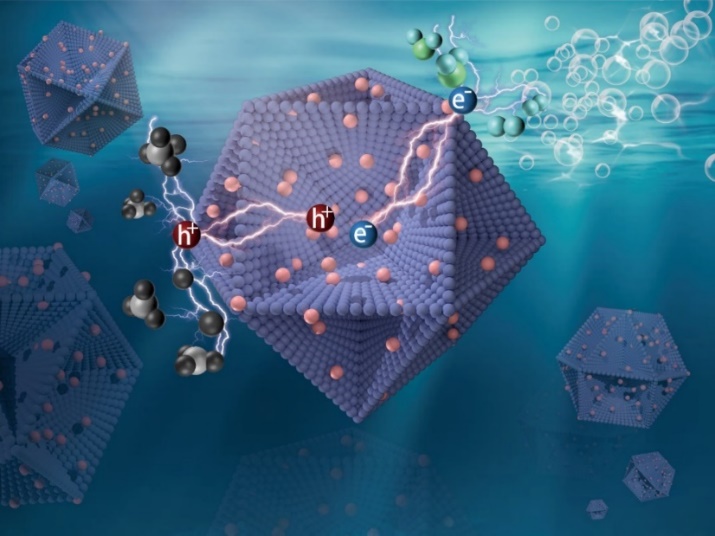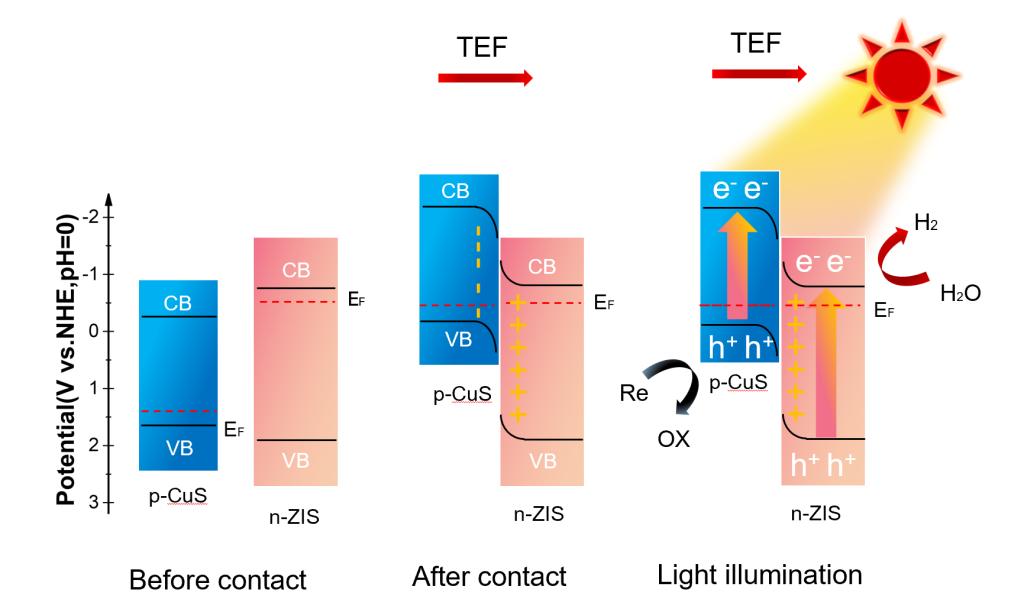Recently, Yu Ziqi, an undergraduate from School of Materials and Chemistry published a research achievement titled “Gemstone nanoflower-shaped ZnIn2S4/CuS heterojunction with ultralong lifetime of photo-induced carriers for photocatalytic hydrogen evolution” in Applied Catalysis B: Environment and Energy. Yu Ziqi was the first author, Prof. Lian Zichao from School of Materials and Chemistry was the corresponding author, and the School of Materials and Chemistry was the sole unit.
Hydrogen is regarded as an ideal energy source in the future because of its high energy and pollution-free combustion. It is considered a feasible method to use a suitable photo-catalyst to convert solar energy and decompose water into hydrogen without other pollution. At present, there exists hydrogen conversion such as nuclear energy, wind energy and biomass energy, following huge consumption of energy.
However, the low-efficiency of photocatalytic hydrogen evolution reaction (HER) is the milestone to be conquered for achieving the practical application. The photo-generated carrier lifetime of semiconductors is extremely low due to the low photo-generated charge separation rate. Particularly, ZnIn2S4 (ZIS) is a recently popular ternary layered transition metal chalcogenide. Its band structure is adjustable with the bandgap around 2.06 ~ 2.85 eV and its conduction band in the position of the 1.20 eV, these characteristics indicate that its photo-generated electrons have strong reducing power, which is favorable for photocatalytic HER. Generally, it can be considered feasible as an n-type semiconductor and has received increasing attention in recent years because of its excellent light stability, environmental friendliness, and special layered structure. However, in practical applications, the rapid recombination of photo-generated electrons and holes showed that the photocatalytic activity of a single ZIS in HER was not high. To achieve high performance in HER, building heterogeneous structures with an efficient charge transfer pathway could provide a way to achieve multi-functionality in each phase. Especially, copper sulfide (CuS) is inexpensive, has an adjustable band gap of 1.2 ~ 2.1 eV, and a non-toxic and suitable conduction band (CB), which can not only provide enough power to decompose and reduce water to produce hydrogen, at the same time, it is also a stable, economic and promising type semiconductor, which has a strong visible light absorption capacity.
This study provides new ideas for the effective transfer of photo-generated charge carriers in nano-photo-catalyst systems, exploring how to further improve the efficiency of photocatalytic decomposition of aquatic hydrogen, as well as the preparation of green and economical photo-catalysts to reduce costs of hydrogen production, relieve the dependence on traditional energies, promote environmental protection and sustainable development, and assist more in the energy and catalysis fields. The work was granted by the National Natural Science Foundation of China and Shanghai Original Exploration Foundation.


Related: https://www.sciencedirect.com/science/article/pii/S0926337324000134


